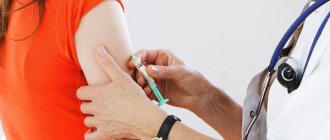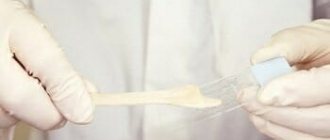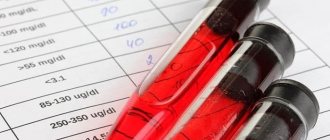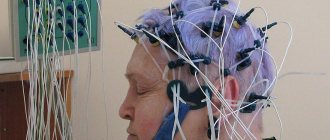Infectious disease specialist
Sinitsyn
Olga Valentinovna
33 years of experience
Highest qualification category of infectious disease doctor
Make an appointment
An endemic disease throughout the world, a bacterial infection of the upper respiratory tract with a hysterical non-productive cough, a childhood disease, the severe consequences of which can be prevented by vaccination - this is all about whooping cough. The causative agent is the gram-negative bacterium Bordetella pertussis. When it enters the body, it attaches to the mucous membrane, causing the development of an inflammatory process and tissue necrosis in this place.
Whooping cough poses a serious risk to children and adolescents. In adults, the disease is less complicated, which is associated with the development of immunity after childhood vaccination, including protection against other infectious agents. If this was not done, the course of the infection will be severe. Due to the refusal of vaccinations in 2021, the incidence rate among the population increased by 40%. Children under 14 years of age accounted for 89% of the total number of cases.
How do symptoms appear?
Symptoms characteristic of whooping cough begin to develop 10-14 days after infection. The disease goes through several stages of development. At the catarrhal stage, cold symptoms are observed: increased body temperature, runny nose, sneezing and dry cough. At the next stage, the disease begins to manifest itself more intensely in the form of a spasmodic cough. It is involuntary, hysterical, uncontrollable. It torments patients most severely at night and in the morning. Noisy wheezing breathing is heard.
Coughing attacks occur without inhaling air and end with inhalation with a characteristic guttural whistle. Due to lack of oxygen, the face turns red and there is swelling. In infants, a spasmodic cough is accompanied by respiratory arrest, and generalized convulsions may appear. At the very beginning of the disease, the bronchial tubes are unproductive due to the high viscosity of the sputum. On average, symptoms of whooping cough in children remain active for 4-6 weeks. The period of convalescence lasts up to 3-4 months, when the residual cough gradually subsides.
Are you experiencing symptoms of whooping cough?
Only a doctor can accurately diagnose the disease. Don't delay your consultation - call
Periods of whooping cough
The incubation period for whooping cough lasts on average from 6 to 14 days. In the typical course of the disease, three stages are distinguished:
- Catarrhal period. A person becomes infected, pathogenic bacteria begin to multiply and symptoms similar to ARVI appear - a low temperature and a dry cough are possible.
- Spasmodic period. During this period, the patient most actively spreads the infection, as the symptoms intensify, the cough becomes paroxysmal and uncontrollable. During an attack, a person turns red, his lips turn blue, his face swells, his eyes water, and there can be up to 30 such attacks during the day. Such a cough leads to muscle pain in the chest, hemoptysis, vomiting, urinary incontinence and other unpleasant consequences.
- Recovery stage. After 1-2 months, attacks become less frequent, and the patient’s general condition improves. The recovery stage begins, although a mild, non-obtrusive cough may still persist for the next few months.
Causes of the disease and routes of infection
The causes of whooping cough lie in the gram-negative aerobic bacillus Bordetella pertussis. An infected person can remain contagious for up to 6 weeks after symptoms begin. Transmission of the infection occurs through airborne droplets during coughing or sneezing. Children are considered protected after receiving all 3 doses of the vaccine. If a child or adult is not vaccinated, inhalation of air near a sick person can cause infection. Infants under 6 months and children over 7 years of age are at high risk.
Diagnostics
The diagnosis of whooping cough is established on the basis of complaints, objective examination and using pathogen isolation methods. The medical department additionally conducts:
- bacteriological examination of smears from the mucous membrane of the respiratory tract or sputum released during coughing;
- determination of antibodies to the pathogen during immunofluorescence studies;
- staging an indirect or direct hemagglutination reaction;
- general clinical blood test to identify signs of inflammation;
- X-ray examination of the lungs;
- consultation with a pulmonologist.
Types of disease
Whooping cough can develop in different forms. With mild cases, 10 to 15 coughing attacks occur during the day. The patient is feeling normal, with slight malaise and a flu-like condition. In the average form, there are from 15 to 25 attacks of obsessive coughing with a longer period. The severe form exhausts children and adults alike. During the day, from 30 to 60 attacks can occur at different times. Adolescents and adults often suffer from atypical forms of whooping cough. According to statistics, about 1.5% of recovered children with weak immunity remain latent carriers of the bacteria.
Treatment methods
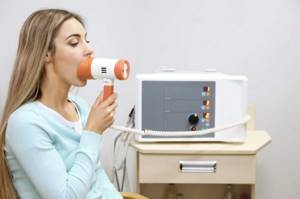
Inhalation therapy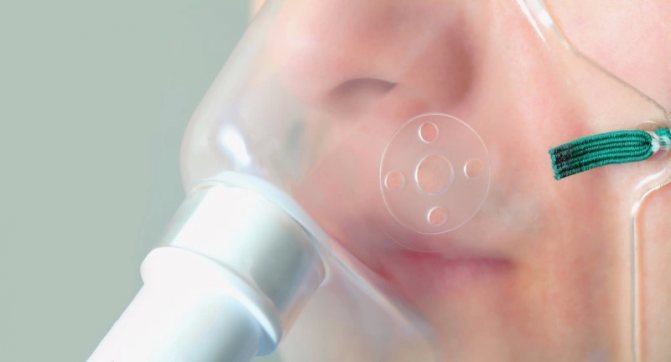
Oxygen therapy - treatment with oxygen
The following methods are also used in the treatment of whooping cough:
- immunocorrection;
- course of antibiotic therapy;
- inhalation with anesthetic;
- antitussive therapy.
Diagnosis and treatment
At an early stage, diagnosis is difficult due to the similarity of symptoms with colds, flu and bronchitis. If the phase of spasmodic cough has begun, then the doctor can make a diagnosis based on just one attack. To confirm suspicions of whooping cough, the following types of studies are carried out:

- throat swab or deep nasal swab (bacteria culture for Bordetella pertussis);
- general blood analysis;
- blood for IgA and IgM antibodies;
- X-rays of light;
- ELISA for antibodies to whooping cough;
- PCR – nasal and throat swab.
How is the disease treated?
Treatment is recommended in a hospital. This is associated with a high risk of complications and a threat to life. This is especially true for age groups that are most susceptible to the disease.
Treatment of whooping cough in adults is carried out mainly at home, but under medical supervision. Therapy includes:
- taking antibiotics and antitussives;
- anticonvulsants, sedatives and antihistamines;
- in some cases, hormonal drugs;
- physiotherapeutic procedures, inhalations.
Laboratory diagnosis of whooping cough and parawhooping cough
A comprehensive study aimed at diagnosing whooping cough and parapertussis, as well as assessing the effectiveness of vaccination against whooping cough.
Synonyms Russian
Pathogens of whooping cough, parawhooping cough; comprehensive examination.
English synonyms
Bordetella pertussis, Bordetella parapertussis; comprehensive examination.
What biomaterial can be used for research?
Venous blood, nasopharyngeal swab, throat swab (oropharynx).
How to properly prepare for research?
- 3-4 hours before taking swabs from the oropharynx (throat), do not eat, drink, brush your teeth, rinse your mouth/throat, chew gum, or smoke. 3-4 hours before taking nasal swabs, do not instill drops/sprays or rinse your nose. It is best to take smears in the morning, immediately after a night's sleep.
General information about the study
Whooping cough is an acute anthroponotic bacterial infection. The causative agent is Bordetella pertussis (Bordet-Zhongu bacillus), a small, non-motile gram-negative coccobacilli, a strict aerobe. The infection is transmitted by airborne droplets. The source of infection is a sick person with any form of infectious process.
During the course of the disease, the following periods are distinguished: incubation period (lasting from several days to two weeks), catarrhal (from 5-8 to 11-14 days), paroxysmal, or spasmodic (2-8 weeks), resolution (2-4 weeks) and convalescence (2-6 months). The most characteristic manifestations of whooping cough are those that characterize the paroxysmal period of the disease. These include dry spasmodic cough, cyanosis of the nasolabial triangle, acrocyanosis, possible vomiting, fever, weakness, and in the hemogram - leukocytosis, lymphocytosis. It should be noted that the disease is most severe in young children; complications from the bronchopulmonary and nervous systems may develop. In adults and persons after vaccination, whooping cough often occurs in a mild, atypical form, usually without complications.
Parapertussis is an acute bacterial infection of the respiratory tract that affects children and adults. The causative agent of the infection is the aerobic bacillus Bordetella parapertussis. The clinical manifestations of this disease are similar to whooping cough; it is characterized by a more blurred change of periods, a mild course, and a rare development of complications, mainly in children.
Diagnosis of whooping cough and parapertussis is based on clinical and epidemiological data, the results of changes in clinical blood tests and is confirmed by laboratory methods. In the clinical laboratory diagnosis of these diseases, several methods are used: the bacteriological method to detect the growth of colonies of pertussis/parapertussis pathogens; serological method aimed at determining total antibodies to these pathogens; polymerase chain reaction (PCR) method - to identify the genetic material of the causative agent of whooping cough.
Bacteriological examination is the first stage of diagnosis, but allows identifying pathogens only in the early stages of the disease, in the first 2-3 weeks.
The PCR method is highly effective in diagnosing whooping cough, allows you to detect DNA fragments of the pathogen B. pertussis in the biomaterial being studied, and has a high diagnostic specificity, reaching 100%. The use of this method is recommended in the first three weeks from the onset of clinical manifestations of the disease, that is, in the catarrhal and early paroxysmal period. At later stages of the disease, the diagnostic sensitivity of the method decreases. It should be noted that, unlike other laboratory methods, PCR is effective when treated with antibacterial drugs. It is also used when examining young children, as opposed to older children and adults, where there may be an increase in the number of false positive results. In individuals vaccinated against whooping cough, a positive result from this method may indicate transient carriage of the pathogen rather than an active form of the disease.
Serological examination makes it possible to detect specific antibodies in blood serum directed to the antigens of the pathogens B. pertussis and B. parapertussis. They can be detected using the indirect hemagglutination test (IRHA).
When choosing RNGA as a diagnostic test for suspected pertussis and parapertussis, one should take into account the clinical period of the disease, the patient’s age and the presence of previous vaccination. To confirm the diagnosis, it is necessary to determine the increase in antibody titer by four or more times in paired sera taken with an interval of 10-14 days. The reaction is performed in parallel with pertussis and parapertussis antigens. Serological examination is recommended to be used within a period of 3-6 weeks from the onset of the first clinical symptoms of the disease, which characterizes the paroxysmal period of whooping cough. This method is not recommended for use in children under 3 months of age, since the immune system of newborns at this time is still immature and maternal antibodies can be detected in low titers. It is also not recommended to conduct serological testing in individuals within 1 year of pertussis vaccination due to the inability to distinguish between the immune response to vaccination or to primary infection. Antibody titers to B. pertussis can be determined to assess the effectiveness of pertussis vaccination in children.
What is the research used for?
- For complex laboratory diagnosis of whooping cough and parawhooping cough.
- For the diagnosis of whooping cough in the first three weeks from the onset of the disease, characterizing the catarrhal and early paroxysmal period, as well as during treatment with antibacterial drugs.
- For the diagnosis of whooping cough and parawhooping cough during the spasmodic (paroxysmal) period of the disease.
- To evaluate the effectiveness of vaccination against whooping cough.
When is the study scheduled?
- With clinical manifestations of whooping cough/parawhooping cough: dry spastic cough, accompanied by a deep wheezing breath, vomiting, cyanosis of the nasolabial triangle, acrocyanosis, fever, weakness, runny nose, lacrimation.
- When examining persons who have been in close contact with patients with whooping cough/parawhooping cough.
- When assessing the effectiveness of vaccination against whooping cough.
What do the results mean?
Reference values
1. anti-Bordetella pertussis
Result: negative.
Titer: 1:80 – conditionally protective titer in unvaccinated individuals; 1:160 – conditionally protective titer of post-vaccination immunity.
2. anti-Bordetella parapertussis
Result: negative.
Titer:
3. Bordetella pertussis, DNA
Result: not detected.
Reasons for the positive result:
- whooping cough;
- parawhooping cough;
- transient carriage;
- immune response after vaccination.
Reasons for negative results:
- absence of whooping cough/parawhooping cough;
- ineffective vaccination against whooping cough;
- decreased immunological response after vaccination;
- false negative results.
What can influence the result?
- Clinical period of the disease, patient’s age, previous vaccination;
- the use of antibacterial drugs depending on the stage (period) of the disease and the laboratory diagnostic method used;
- features of the immune response in newborns;
- previous vaccination.
Important Notes
- When interpreting the examination results, it is necessary to take into account diagnostic methods, the age of the patients, the clinical stage (period) of the disease, and previous vaccination.
- For a comprehensive assessment of the results obtained, they must be compared with epidemiological, clinical and other laboratory data.
Also recommended
- Sowing on Bordetella pertussis/parapertussis
- Clinical blood test: general analysis, leukocyte formula, ESR (with microscopy of a blood smear to detect pathological changes)
Who orders the study?
Infectious disease specialist, pediatrician, pulmonologist, otorhinolaryngologist, therapist, general practitioner.
Literature
- Ghanaie RM, Karimi A, Sadeghi H, Esteghamti A, Falah F, Armin S, Fahimzad A, Shamshiri A, Kahbazi M, Shiva F. Sensitivity and specificity of the World Health Organization pertussis clinical case definition / Int J Infect Dis. 2010 Dec;14(12):e1072-5.
- Przegl Epidemiol. 2014;68(4):633-6.
- Piekarska K, Rzeczkowska M, Rastawicki W, Dąbrowska-Iwanicka A, Paradowska-Stankiewicz I. Use of laboratory methods in diagnosis of pertussis in adult with paroxysmal cough / Przegl Epidemiol. 2014;68(4):633-6.
- Fauci, Braunwald, Kasper, Hauser, Longo, Jameson, Loscalzo Harrison's principles of internal medicine, 17th edition, 2009.
- Laboratory manual for the diagnosis of whooping cough caused by Bordetella pertussis / Bordetella parapertussis. World Health Organization. Dept. of Immunization, Vaccines and Biologicals. WHO/IVB/04.14, 2004.
- Respiratory tract infections. Diagnosis of whooping cough and parawhooping cough. – Methodological recommendations MR 3.1.2.0072-13.
Prevention
To prevent the disease, pertussis-diphtheria-tetanus vaccination has been carried out all over the world for many years. In 1940-1948, there was a high mortality rate from this disease among young children, but the invention of vaccination helped reduce the number of deaths by 45 times. It is recommended to be vaccinated several times throughout life, and the first vaccination is given to a pregnant woman in the third trimester of pregnancy. Vaccination against whooping cough does not provide an unambiguous guarantee of avoiding infection, but the disease is much milder and with fewer complications, and the mortality rate from whooping cough worldwide is 45 times lower compared to unvaccinated people.
Treatment of whooping cough
It is most preferable to start treating whooping cough during the most contagious period - in the first 10-12 days of illness. Self-medication is ineffective and often dangerous, so if you suspect this disease, you should make an appointment with a pulmonologist at the Doctor Anna clinic as soon as possible. A pulmonologist, based on the clinical symptoms of a particular patient, draws up an individual treatment regimen. Most often, patients are prescribed macrolide antibiotics. The patient is also recommended to reduce the amount and intensity of physical activity, walk in the fresh air, and be sure to maintain social distance. A humidifier can help relieve symptoms of illness.
For a patient in serious condition, it is preferable to remain in hospital under the supervision of doctors. There he will be offered various types of physical therapy to speed up recovery, such as calcium electrophoresis, oxygen therapy, and ultraviolet irradiation of the body. With electrophoresis, a special medical solution is injected and small electrical currents are applied, which helps speed up the healing process. Oxygen therapy is used to alleviate the condition of patients with complications such as damage to the respiratory system. And UFO has a disinfecting effect and kills pathogenic microorganisms.
Complications
In severe cases of the disease, there is a high risk of developing a number of extremely dangerous complications:
- Hemorrhages in the spinal cord and brain, in the sclera of the eyes, on the surface of the skin of the face, bleeding from the nose;
- Impaired proper functioning of the lungs (emphysema);
- Airway rupture;
- Formation of hemorrhoids, protrusion of the rectum and umbilical or inguinal hernias;
- Associated infections due to weakened immunity.
Transmission of whooping cough
The causative agent of whooping cough is the whooping cough bacillus or Bordetella pertussis. The routes of transmission of whooping cough are few. In most cases of Bordetella infection, it is transmitted from person to person by airborne droplets at a distance of up to 2 meters. They can settle in the oropharynx or nasopharynx, or enter directly into the lungs if a person inhales contaminated air. The bacterium can survive on a dry surface for several days, so contact with infected surfaces can also cause infection.
Pertussis produces toxins (filamentous hemagglutinin, pertactin, agglutinogen, etc.), which in various ways help to attach to and damage the epithelial cells of the respiratory tract. One of the toxins paralyzes the cilia of the respiratory tract, after which they cannot move. In a normal state, they carry mucus and bacteria out, but in a paralyzed state, the cilia are tightly attached to the epithelium and their movement becomes impossible. For this reason, mucus begins to accumulate and, in order to clear the airways, the cough reflex is triggered and coughing attacks begin.
With the help of modern diagnostic methods, the disease can be easily identified. Therefore, if alarming signs of whooping cough appear, you should not wait for complications; you should promptly make an appointment with a pulmonologist at our clinic, who will conduct a thorough examination and prescribe competent treatment.
